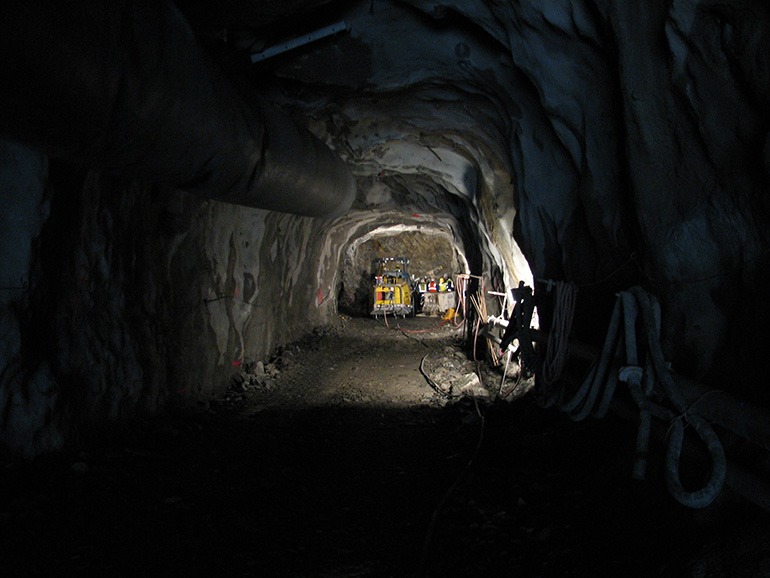The Brunner coal seam has won again, locking deep within itself, probably forever, the bodies of the Pike River miners killed in the 2010 explosions. BY HUGH DE LACY.
The 16 Pike River miners and 13 contractors join the five miners already entombed in the deadly Brunner coal seam from the 1926 Dobson disaster, and another two left behind after Strongman erupted in 1967.
Rescuers had managed to recover all 65 bodies from the 1896 disaster – still the worst industrial disaster in the country’s history – four of the nine killed in Dobson, and two of the 19 from Strongman, but mine owner Solid Energy has abandoned the Pike River 29 as unrecoverable.
The Brunner seam’s tally of deaths is now 122, of which 36 bodies remain entombed where they died.
When state-owned collier Solid Energy and owner of the Pike River Mine announced this month, in the presence of Prime Minister John Key, that it was not prepared to risk other men’s lives to recover the bodies over two kilometres deep into the Brunner seam, the reaction of the dead men’s families was surprisingly muted, considering the vigour with which they sought a recovery operation.
Perhaps they already knew deep down that this was going to be the outcome, albeit four years after the actual tragedy, and Solid Energy’s decision may have imposed some sort of closure for them.
The main reason the company wasn’t prepared even to have a go was that there remains only one entrance to the mine, the main portal.
A recovery team might have made it into the mine, past such rockfalls as are known to exist, but had further rock fallen behind them there was no way that they could be rescued.
The obvious strategy was to create a second exit through the vertical ventilation shaft, whose pump at the bottom may have triggered the original explosion, but that would have required a drilling rig big enough for the job – and in the steep and wild country of the Paparoa Range northeast of Greymouth on the West Coast of the South Island, there was simply no place to site it.
Had such a spot existed, the rescuers might have been able to follow the lead of the Chilean authorities who, about the time of the Pike River explosion, drilled down and rescued 39 miners trapped below ground for two months.
The key difference was that the 39 Chileans were still alive, and after a small hole had been drilled down to them from the outside, they were able to receive and assemble equipment that enabled them to effect their escape by drilling a second and larger hole from the bottom up.
A recovery team might have made it into the mine, past such rockfalls as are known to exist, but had further rock fallen behind them there was no way that they could be rescued.
With only one exit at Pike River, the prospect of entrapping more men in the event of another rockfall between them and the entrance, knowing that they would have to be left to starve to death, was in the end too awful to contemplate.
And despite the presence of a heavyweight political delegation led by the Prime Minister at the announcement, Solid Energy appears to have made the decision on its own.
From the time it acquired the mine from the collapsed Pike River Coal Company in early 2011, Solid Energy stated consistently that safety was the paramount consideration in the question of whether the bodies could be recovered.
It had acquired the mine, again apparently on its own initiative, in the first quarter of 2011, following its receipt of a succession of consultants’ reports on its own financial status.
One report in particular, by Australia’s Macquarie Bank, criticised Solid Energy’s reserve-asset ratio as being low compared to similar-sized Australian miners.
The 40 million tonnes locked up in Pike River made the company’s financial situation look brighter almost in an instant, and the acquisition was pretty well cost-neutral.
Also, at the time the acquisition was made in the second quarter of 2011, coking coal prices had slipped from the US$300/tonne highs they had enjoyed earlier, but no one envisioned that they would crash to a bit over US$100/tonne virtually before the year was out.
That in turn crashed Solid Energy, which until then had been designated by the Government as one of the state-owned enterprises, along with Air New Zealand and three electricity generators, which would be part-privatised by way of the sharemarket.
Solid Energy is now virtually unsaleable and has gone into rapid shrinkage mode to cope with coking coal export prices that are below the cost of production.
The company still has its domestic markets for about two million tonnes of thermal coal a year – albeit under pressure from imports – but coking coal export prices are currently bumping along at a floor-level US$117/tonne, expected to ease to US$115/tonne in 2015.
Solid Energy now wants to quit Pike River, but in the absence of a buyer it’s going to struggle to do even that.
Q&M understands it is now in talks with the Government to try to determine how the mine-site will be protected, or otherwise dealt with as the site of the biggest entombment of miners in the country’s accident-plagued coal-mining history.


Parting words from Jeremy Sole- a final column